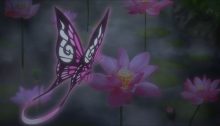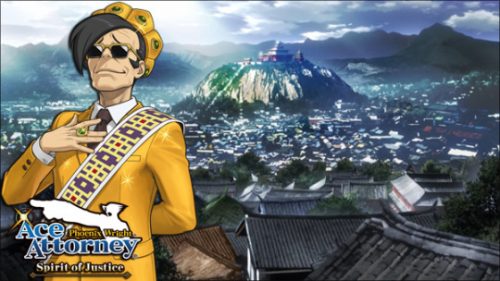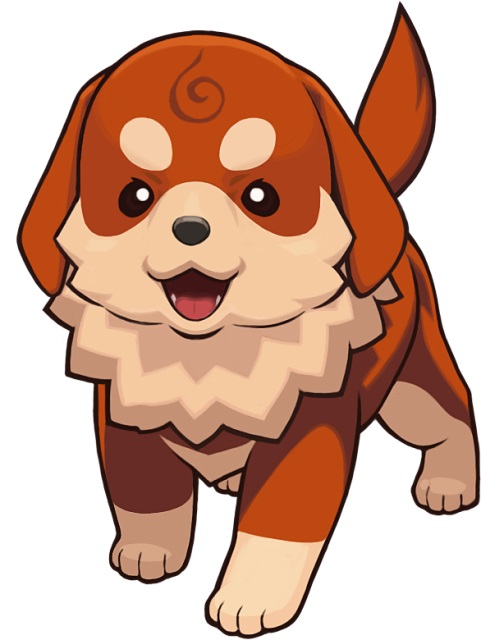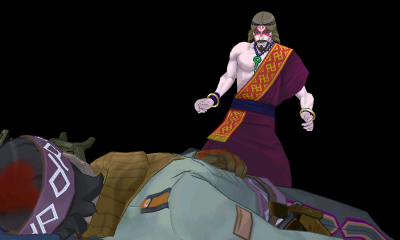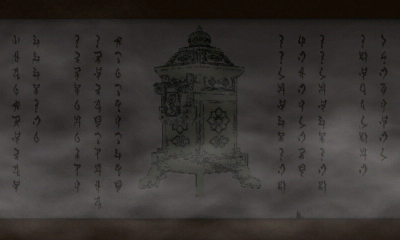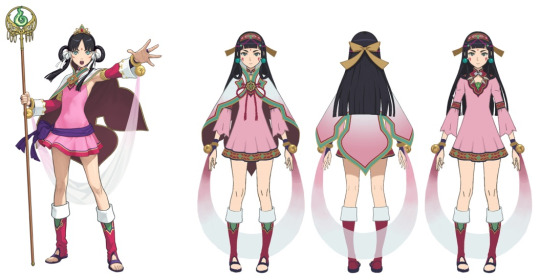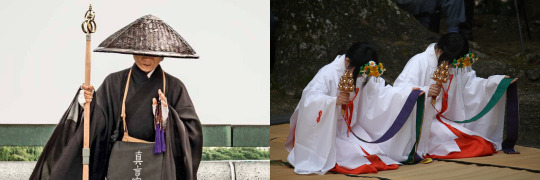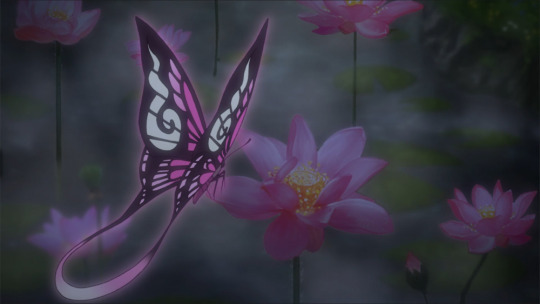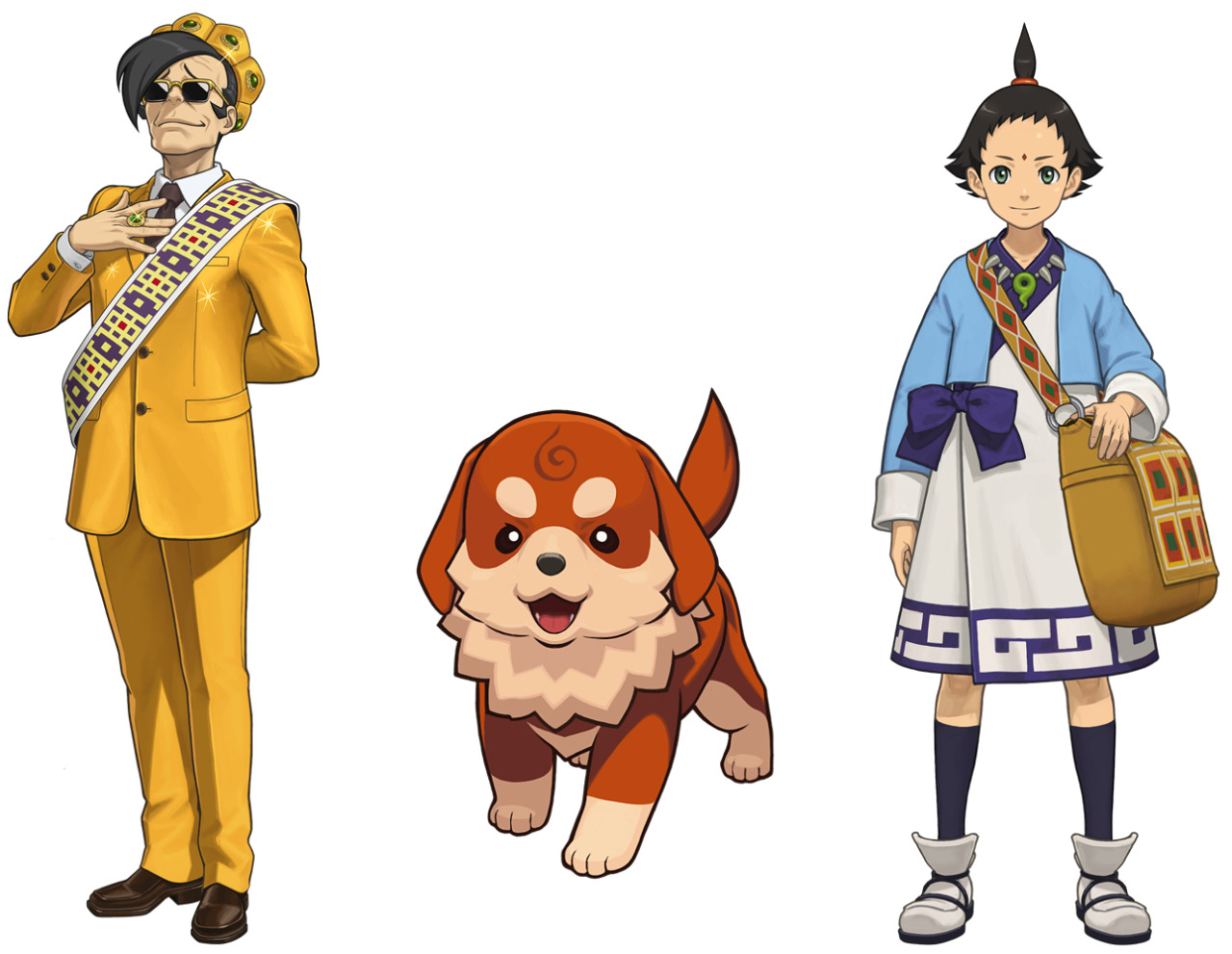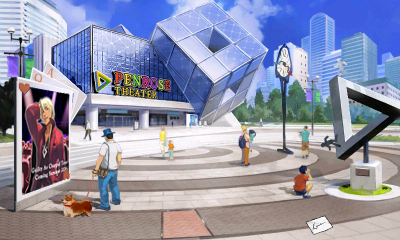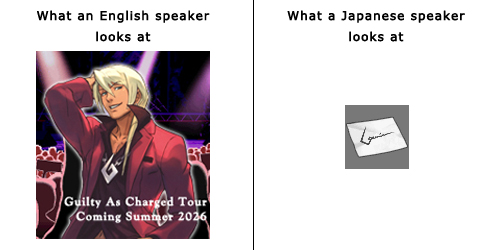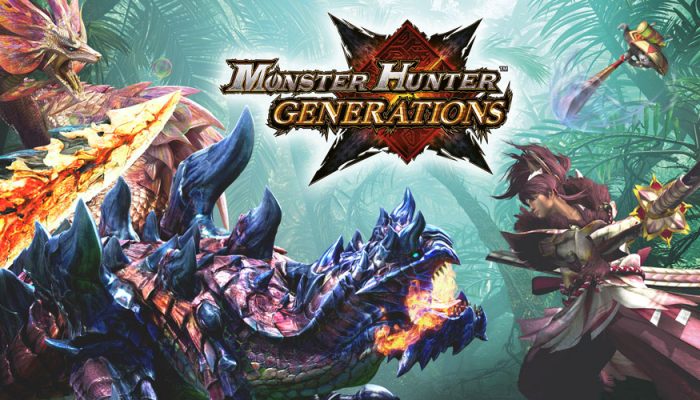 This is such an interesting read from a linguistics standpoint.
This is such an interesting read from a linguistics standpoint.
☆ NintendObs Weekly – Monday, August 29, 2016 – Sunday, September 4, 2016.
Ace Trivia: Smorgasbord of Justice
SEP 2
Well, here we are – less than one week away from the launch of Phoenix Wright: Ace Attorney – Spirit of Justice on September 8th! I hope everyone’s been enjoying the Nintendo 3DS demo. If you haven’t tried it yet, *gasp* then what are you waiting for? A personal invitation?
Well, luckily, I have one of the game designers, Mr. Daigo, here today to tell us about what in this demo makes it extra special. Plus, I have some extra designer and cultural notes about Rayfa and Nahyuta’s designs, and other random trivia floating about, so pull up a chair and enjoy this week’s dev and loc blog!
A Revolutionary Demo
Hi, everyone. I’m game designer Yoriki Daigo. I’m here today to talk about my long history of fighting to the death with the director, Mr. Yamazaki. I mean, considering how we first met…
What? I can’t talk about that?
It’s not interesting, and too graphic… Plus, there’s a downloadable demo on the Nintendo 3DS eShop to talk about? But what about all those people who’ve already tried the demo at events like E3, Anime Expo, and San Diego Comic-Con this year?
Well, actually…!
The downloadable demo is even better than the version you tried! We’ve powered it up with the following four things:
1) A teaser trailer!
2) The Dance of Devotion!
3) Shah’do!
4) The main game’s opening sequence!
Let’s take a closer look at each of these power-ups.
1) A teaser trailer!
Clear the demo to see an exclusive new trailer!
2) The Dance of Devotion!
The downloadable demo features the sacred dance Rayfa performs at the beginning of each Divination Séance, which you can watch to your heart’s content.
But for those of you who’d rather hurry and get to the Divination Séance itself, fear not! We have made this scene skippable just for you.
3) Shah’do!
This lovable little doggie, Shah’do, makes an appearance in the downloadable demo. Just when he makes his appearance is something you’ll have to play to find out!
4) The main game’s opening sequence!
We’ve added both the full game’s opening anime and Episode 1’s opening to the demo.
(From the opening anime for Spirit of Justice)
(From the Episode 1 opening in Spirit of Justice)
Speaking of the Episode 1 opening, Mr. Yamazaki had a big smile on his face one day when he came up to me and said…
Yamazaki: “So, I had this amazing thought…”
Daigo: “And?”
Yamazaki: “And I was thinking we could have a bunch of different images appear on the surface of the treasure box in the opening sequence.”
Daigo: “Hey, that’s not a bad idea!”`
I gathered the art designers and programmers at once, and they told me that as long as it wasn’t in 3D, they could probably make some sort of movie of what he was envisioning.
Daigo: “They said they’ll probably be able to pull it off, but it might be tough if it’s in 3D.”
Yamazaki: “What? But the game’s on the Nintendo 3DS, so it should be in 3D.”
Daigo & designers & programmers: “Gnarrrrgh!”
There was blood pouring from the designers and programmers’ eyes. At this rate, I was afraid that the last thing I’d see in this world was going to be my fellow team members as they descended on me. However, everyone agreed that it would be better to have the opening be in 3D. And so, they went about trying to figure out how to do it. They figured that if they could get pictures to appear on a still box, then they could probably find a way to make it 3D. That’s when Mr. Yamazaki said…
Yamazaki: “Um… Can we make this box rotate somehow?”
Daigo & designers & programmers: “NoooooOOOOOOOOOO(screen flash) oooooOOOOooooooooooo!(*smack* *smack* *break*)”
Everyone had a mini-breakdown all at once, but this talented team wasn’t about to be beaten. We all agreed it would be cool to have the treasure box spin, so, even though I have no idea how they did it, the art designers and programmers worked together and managed to make the box turn – and in 3D. I couldn’t believe it.
I… I was saved! No one would need to divine what had happened to me through a Divination Séance! Or so I thought, because Mr. Yamazaki just couldn’t be stopped!
Yamazaki: “Um… Actually… do you think you could…
“…make the box look like it’s is coming out of the picture in this scroll?”
Nngh…
NNNNGGGGHHHOOOOOOOOOOHHH!!!
It’s time for a revolution!
And that’s how the evil Mr. Yamazaki was overthrown and how peace came to the Spirit of Justice team☆
…Huh. Well, what do you know? My story somehow ended up being about how Mr. Yamazaki and I fought to the death anyway!
In any case, I hope you’ll check out how the spinning box turned out for yourself in the opening of the downloadable demo for Nintendo 3DS.
*This entry is a work of fiction. The characters of “the evil Mr. Yamazaki,” “the designers,” “the programmers,” and “Daigo” are in no way related to their real-life counterparts – in fact, we’re actually all very good friends. Furthermore, all of the ideas discussed above were given by the dev team as a whole.
However…
The fact that we kept refining features like this in order to make something even better IS NOT A WORK OF FICTION!
Yamazaki: “…You know, I don’t mind that you made me out to be the bad guy in this, but… isn’t this entire entry structured almost exactly like the one you wrote for Dual Destinies? Plus, isn’t the whole “rebelling against some crazy impossible task” thing exactly the same as my entry? Hmph, not one for originality, are you? Heh heh heh.
Daigo: “Aaaaaaaaaargh… You want me to revolutionize your face?!”
Yamazaki: “Aaaaaaah! Wait, did you just steal tha…rgh…”
And that is how I disposed of the evil Mr. Yamazaki. *laugh*
Well, uh… thanks, Mr. Daigo… But I thought you guys were all “very good friends”? Still, that was quite the tale of technical woe, but the end result was definitely worth it. I remember being wowed by it the first time I saw it for myself. It also set the tone perfectly for the mysterious Kingdom of Khura’in.
Speaking of Khura’in, I’d like to share some trivia about Rayfa and Nahyuta’s earlier and final designs that I dug out of Mr. Fuse. (I actually just stopped him as he was on his way home today again… Sorry, Mr. Fuse! And thanks for being such a good sport!)
Even in her earlier designs (right), you can see that Rayfa was meant to be a full-on priestess, but as the game’s story began to take shape, Rayfa also became the princess of Khura’in. Mr. Fuse added a few elements to denote this aspect of her character with her tiara and regal sleeves. In addition to wanting Rayfa to have a unique hairstyle, her hair was designed in a manner that is reminiscent of Queen Himiko, complete with large loops of hair. This sort of looped hairstyle is also meant to be a reflection of the halo of Khura’inism’s founder, the Holy Mother in the in-game world, as well as a link to the unique hair styles of Maya and Pearl Fey.
Her pink dress also underwent some changes and the final outfit is designed after dancer’s clothes since performing the Dance of Devotion is a key part of her job as the royal priestess.
Monk with khakkhara (left), miko priestesses with kagura suzu bells (right)
The staff that Rayfa carries is another clue that she’s a religious figure, and is fashioned after khakkhara or “Buddhist monk staves”, but that’s not the only clue.
The bells around Rayfa’s wrists are based on Japanese suzu bells, which are common at Shinto shrines and also in Shinto ceremonies. As with Buddhism, the jingling sound of a suzu bell is associated with spiritual power. Japanese miko (priestess) and their sacred kagura dances are also linked with the sound of bells. In fact, it’s almost impossible to say “miko” and not think of the sound of suzu bells.
Lastly, besides being like the ribbons on the kagura suzu a miko carries, the long ribbon between Rayfa’s arms is meant to make her look like a Khura’inese butterfly, and serves to reinforce her role within Khura’inism.
A Khura’inese butterfly on a lotus flower. Note how the wing tips are attached at the bottom.
When it comes to prosecutors, there is always a certain look that Mr. Fuse tries to achieve. As he talked about back when he was designing Simon Blackquill, an Ace Attorney prosecutor has to have a certain look, and it usually involves a suit or some other type of Western clothing. In this case, Nahyuta’s white jacket is based off of a traditional type of Indian clothing known as sherwani (especially fancy wedding ones) mixed with an English frock coat.
We talk a lot about how Nahyuta is not just a prosecutor, but that he is also a devout monk of Khura’inism, but how is that reflected in his design? There are actually a few interesting design elements with meanings you may not be aware of.
The first most obvious thing is his floating scarf. While it may seem like a silly piece of fabric, it’s actually another Japanese cultural shorthand that conveys Nahyuta’s holiness and suggests that he is like a god. These scarf-like things are called hagoromo (羽衣, lit: feather clothes) in Japanese, and are worn by Buddhist celestial beings known as tennin and deities such as Nio.
Tennin (left), a Nio (right)
Hagoromo are the celestial clothing that allows these deities to fly, so in a sense, a character wearing hagoromo is not unlike a character with a pair of angel wings in the West.
Speaking of divinity, Nahyuta’s overall character design is very gender neutral, or as Mr. Fuse likes to say, Nahyuta has transcended gender. The team had originally meant for Nahyuta to be whatever gender the player wanted him to be. This aspect of his appearance is also rooted in Hinduism and Buddhism, where a number of deities and gods are either genderless or are portrayed as both genders at once or as alternating between male and female depending on the depiction. As you can see from one of the earlier versions of his design, he was more feminine at one point, so in order to bring him truly to the center of the spectrum, he was given slightly broader shoulders and a slightly more masculine face.
Lastly, there is one more hint to his personality in his design: the prayer beads necklace he wears around his neck. Incidentally, it consists of 48 beads.
And now, some bonus trivia!
- If you look really closely, the geometric design on Payne’s sash is actually the first character of his Japanese name, 亜内 (auchi). I guess his new clothes are just as tacky as the man wearing them.
- Shah’do is said to be a red Tibetan mastiff. If you know anything about how big Tibetan mastiffs get, you know that Shah’do is still just a happy little puppy.
- The little tuft of hair on the top of Ahlbi’s head is meant to resemble Maya’s top knot, and shows a point of intersection between the cultures of the Kingdom of Khura’in and Kurain Village. There are a number of these shared traits between the cultures of Khura’in and Kurain Village sprinkled throughout the game and in the designs of the characters, so keep your eyes peeled as you play and see how many you can find!
- Words like “Your Benevolence” and “Your Magistry” are titles we use to substitute for the fact that in English, you call people by titles to show rank and respect. The word “magistry” is not a real word, but a mashup we created of “majesty” and “magistrate” to give the judge an aura of authority in his courtroom.
- We also use the word “accused” instead of “defendant” in the Khura’inese courtroom since it’s kinda hard to be a defendant if you’re guilty until proven innocent, and there are no lawyers around to, you know, defend you. There are other special names and titles like these that we’ve applied to the Khura’inese court system and culture that are mostly to help flesh out the world a little.
- And finally, there seems to be some confusion as to where the Kingdom of Khura’in is, with some people thinking it’s in the Middle East! But while it seems like a paradox, this magic trick is quite easy to solve with the help of our friend Klavier Gavin.
Athena: あ!牙琉のサインだ! (A! Garyu no sain da!)
“Oh, サイン (sain)!” you might say. That’s the English word “sign”! Well, let’s see what happens if you translate that sentence as “Ah! It’s a Klavier sign!”
*Gavinners’ tour poster courtesy of 10 minutes and my mad 1999-era photoshopping skillz.
Not exactly the result we were looking for, right? So what’s going on?
This is an example of translating without cultural context. Without considering how a word is used within a specific culture, it’s easy to accidentally convey the entirely wrong idea to your target audience. (Heck, this even happens between British and American English with words like “lift” vs. “elevator” and “torch” vs. “flashlight.”) In this case, the sentence should’ve been translated as “Ah! It’s Klavier’s autograph!” Had Athena been talking about the actual sign, she would’ve said 看板 (kanban) instead since sain is only used to mean either an autograph or signature, a mathematical sine, or some sort of cue, like a sign or a signal a baseball catcher might give a pitcher.
How does this relate to why アジアの西の果て (ajia no nishi no hate – lit: western edge of Asia) is officially translated in English as “the western edge of the Far East?” Because I wanted to more accurately convey where Khura’in is based on how the Japanese word ajia (アジア) is used.
It’s understood among Japanese speakers that when ajia is used in daily life, and even on TV news broadcasts, they are only talking about the countries of East Asia – Japan, Korea, China, and Mongolia. As Wikipedia writers even pointed out:
日本では逆に、しばしば中近東ならびに中央アジアや南アジアを含めず、極端な場合には東南アジアも除いた東アジアのみをさすことがある。
“In contrast [to other cultures’ understandings], the general understanding in Japan is that ajia frequently does not include the Middle East, nor does it include areas like Central Asia or South Asia. In extreme cases, it doesn’t include Southeast Asia either, and only denotes the countries of East Asia.”
So it turns out that the original intention of the Japanese description that was meant to be read and interpreted by a Japanese audience is only unambiguously accurate when translated as “the western edge of the Far East/East Asia,” and not “the western edge of Asia,” since even in English, the colloquial usage of “Asia” can vary from person to person and culture to culture to include (or not include) countries such as Turkey or regions such as Central Asia.
But there’s actually another reason why a Japanese person would immediately think of the Himalayas and of India in conjunction with a religion like Khura’inism: the exoticism and mystery of India as the birthplace of one of the major religions of Japan – Buddhism – and the pervasiveness of stories like Journey to the West in the Japanese collective conscious.
Much as how American Christians, Jews, and Muslims think of Jerusalem as the exotic and foreign birthplace of their religions, an element of mysticism has been infused with the Japanese people’s image of India through Japanese pop culture and immensely influential works like Journey to the West (西遊記, pinyin: Xī Yóu Jì) or “Saiyuki” as it’s transliterated in Japanese (no, not that “Saiyuki”…), which is the story of a monk and his supernatural companions who are on a journey to retrieve some sacred Buddhist scriptures from the Western Regions (or what one might say is “the western edge of the Far East”).
India has pretty much always been considered “non-Asian” to the Japanese, since Japanese culture was historically influenced primarily by Chinese culture. So from the Japanese perspective, Indian culture is a familiar, yet utterly different and unique one compared to their own. As a comparison, think about how ancient Greek culture is one step removed from American culture, which is European influenced – it’s familiar because we know their gods and legends, like Hercules, but just far away enough through space and time for it to seem exotic.
But ultimately, the reason why I know for sure that Khura’in is on the western edge of the Far East is because I spoke with Mr. Yamazaki and Mr. Fuse to confirm that this is the actual region they meant to convey to their audience.
Next Friday – well, you’ll probably be busy playing Spirit of Justice, but if you’re looking to take a break, I’ll be here to give you a look at how the game was put together – literally! It’s time to explore the programming and dramatic presentation scripting sides of Spirit of Justice, and just how we decided on the design of the game’s logo.
Until then!
Catch up on previous blog entries here!
— Janet Hsu at Capcom
Source: Capcom Unity.
At NintendObserver, the comments are on Discord.
Click on Community to learn more. 🙂
…
…Wanna play? Buy a 3DS.
And if you’ve already got yours, click on Phoenix Wright Ace Attorney Spirit of Justice for everything you need to know about the game. 😀
